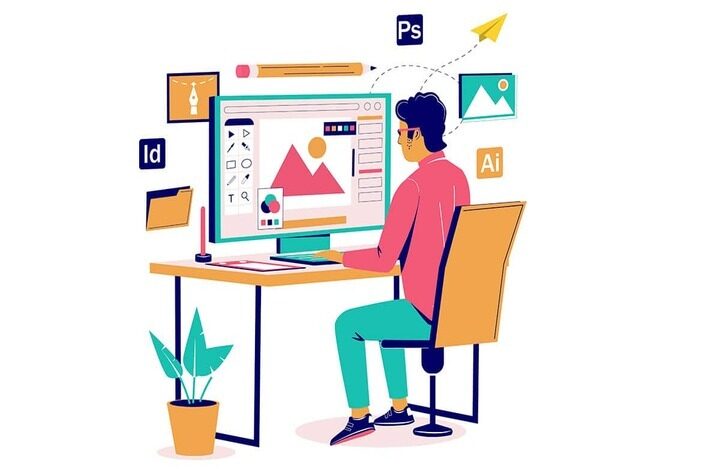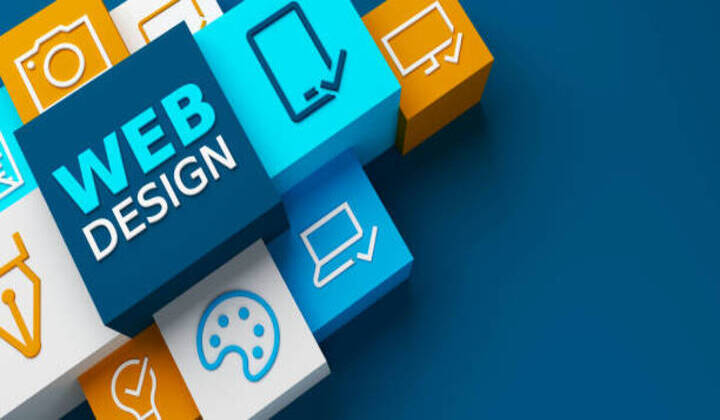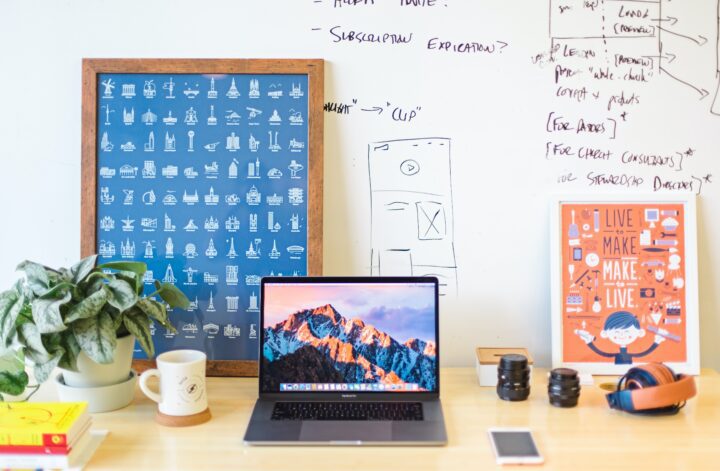A graphics designer’s skill set has to be one of the most diverse and crucial in today’s world of online businesses. Their job involves conceptualizing unique and alluring visuals based on brand requirements, creative designing, graphic design, typography, developing logos and illustrations, and so on. s
With so many things that need to be covered when designing web graphics, it can be very intimidating for an aspiring graphics designer to know where to start learning. So, How To Improve Your Design Skills? How do you go from knowing nothing about the trade to becoming a pro in a matter of time?
Don’t worry! We’re here to help. Learn about the different Website Design Mumbai skills that you need to develop and sharpen to be the best designer in today’s market. There is enormous scope for growth in the industry, and we hope you will join us on this journey with the below-given tips.
Investigate Design Theory –
Graphic design developed by Graphic Designing Services Company In Mumbai is an art form, and while there is a lot you can learn by going out and practising your skills, it’s important to understand the basics. If you want to put them all together properly, understanding the fundamentals is a must. Basic knowledge of graphics typography will help you understand a lot about design.
Understanding color theory can provide useful insights when approaching projects, and knowing a bit about perspective will give you a huge advantage regarding composition and visual hierarchy. Learning to draw and sketch effectively will help you hone your idea development skills and bring out the best features of any project you choose to undertake.
Make The Most Of Feedback –
Feedback can be very helpful for developing your Graphic Design Skills. It helps them understand what works well, what others think and feel about your designs, and what needs improvement. It can also help them become more aware of the small details that they may have missed before. Be it positive or negative; feedback always pushes you to do better.
Regarding feedback, it is important to listen carefully, understand what others think and feel about your style, and accept them instead of getting defensive. It would be best if you always tried to hear out the other side and consider their opinion.
If you’re not open-minded enough to receive criticism, then you’ll never be able to improve yourself. Even if you ignore your critics completely, you could still benefit from getting feedback.
Begin A Side Project and Experiment –
If you’re working in an office environment, chances are you spend a lot of time doing the same repetitive tasks every day. If you want to get out of that rut, why not start a side project? Designing something completely different will help refresh your skills and give you a fresh perspective on what you might like to pursue next.
You could also choose something close to your heart, whether that’s a hobby or a cause you care about. Whatever you choose, just remember that you need to put in the hard yards to master the subject matter. You might also consider looking into freelancing, which allows you to try out a new creative style or technique.
Consult With Other Designers –
To become great at what you do, you must practice and experiment constantly. You need to put your ideas to the test and push yourself to try new things. One of the best ways for a graphic designer to learn and experiment with new styles and techniques is through collaboration with Creaa Designs. Social media is also a great place to connect with other designers and share ideas.
There are many online communities where you can discuss topics related to design. When you share your experiences and knowledge with others, you gain insights from different perspectives – learn fresh approaches to handling projects. If you connect with the right people, you will also gain influence and opportunities. Don’t wait for permission; knock on doors and ask if you can join someone’s team.
Reading A Book –
Another important step in improving your graphic design skills is to read books and theories related to designs, creativity, color schemes, and web typography. You can also delve deeper into the topic using other sources like blogs, magazines, websites, podcasts, and books. You can read about all kinds of stuff here, including how to become a designer, what to expect when starting, and how to stay motivated.
If you are looking for inspiration, there are plenty of great books on the topic. These resources can help you to understand both the theories behind the practice of design and the practicalities of production, and you can easily follow along to see how others have tackled similar problems. Gripping the theory always helps improve your design skills.
Change Your Software –
Every designer starts with a specific piece of software that they enjoy using. When you’re first starting, it may seem like an intimidating prospect, but each application offers different features and functions that can help you create stunning designs. Over time, you may make adjustments to your design tools, but the initial investment will pay dividends down the line.
For example, if you start using Photoshop, you may find yourself switching to other programs later in life, but it’s always worth the transition because everyone knows Photoshop. There are plenty of alternatives if you ever need them. As a graphics designer, you may consider changing the software you’re currently using to get better and more viable results. So, choose wisely!
Final Takeaway –
Designing with others is an essential skill for any designer – whether you’re starting out or already established. Collaborative Design is about working together with others, sharing ideas, and taking risks.
Whether you are doing a website designing company Mumbai or creating a logo, website, or product, you will discover a lot by getting feedback from clients and colleagues.
You can also find inspiration around the web through articles, tutorials, and social media. Finally, you can get help from a book or article. If you are stuck, go back to basics. Look at the fundamentals before trying something more complicated. Start simple and make sure you understand what you are creating.




